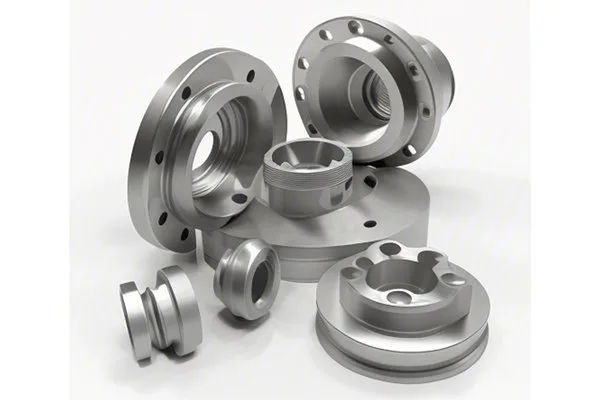Welcome aboard the fascinating journey into the world of steel! If you’ve ever marveled at the strength of a shiny metal part in your favorite gadget or wondered about the magic behind CNC machining, then you’re in the right place. Today, we’re diving deep into how the melting point of steel impacts its mechanical properties—particularly during CNC machining.
But, before we get on this metal ride, let’s set the stage.
Imagine you’re in a factory, surrounded by whirring machines and the smell of cutting oil. In front of you, a pristine block of steel sits silently, waiting to be transformed into a precise component. Now, here’s where the magic happens: The journey from that raw block to a finished, functional piece is all about how we manipulate the properties of steel, starting with its melting point.
What on Earth is Melting Point, Anyway?
In simple terms, the melting point is the temperature at which a solid becomes a liquid. For steel, this typically hovers around 1,370 to 1,540 degrees Celsius (that’s about 2,500 to 2,800 degrees Fahrenheit for the folks in the U.S.). Now, why is this crucial? Because this very temperature governs how steel behaves during the CNC machining process.
Think of melting point as the soft spot of steel; once it hits that temperature, it becomes all malleable, just like butter on a warm toast. This control allows manufacturers to shape steel into any form they desire.
Steel Types: A Melting Pot of Possibilities
Before we delve into the nitty-gritty details, let’s explore the various types of steel. Each type has its melting point and unique mechanical properties. Think of steel types as a box of chocolates—each one has its distinct flavor and sweetness!
Each type presents different challenges and opportunities during CNC machining. So why does this melting point variation matter? Well, let’s discuss mechanical properties.
Mechanical Properties: The Strength Behind the Steel
The melting point doesn’t just dictate how steel behaves as it transforms from solid to liquid. It also plays a critical role in steel’s mechanical properties, which include:
So, how do we blend these properties, and why does it all connect back to the melting point? Let’s break it down.
The Melting Point Connection: From Furnace to Factory
Imagine the melting point as the gatekeeper. When steel is heated approaching its melting point, it starts to change structurally. The atomic bonds loosen slightly, granting distinct physical properties. But if you take it too far, you’re in dangerous territory—you risk losing structural integrity!
During CNC machining, knowledge of the melting point helps machinists plan their operations.
Have you ever noticed how some drills just seem to glow red hot while working hard? That’s the heat generated during the cutting process, and if the material is pushed too close to its melting point, you could end up with a gummy mess instead of a beautifully machined part.
There’s a detailed dance that takes place—feed rates, spindle speeds, and coolant usage must all be perfectly balanced to avoid reaching that scary melting point during operation.
CNC Machining Strategies to Manage Melting Point Concerns
CNC machining isn’t a one-size-fits-all approach; it requires precision and strategy! Here are some ways to manage melting point in machining processes:
In CNC environments where conditions fluctuate, understanding how the melting point affects not just the material but the entire machining process becomes vital.
Real-World Impacts: Why Does All This Matter?
Let’s paint a picture of the real-world implications. Consider a surgeon needing a stainless steel instrument that can endure high temperatures and resist corrosion. If the manufacturer doesn’t account for the melting point, it could lead to a faulty tool, ultimately placing lives in jeopardy.
On a grand scale, overlooking how steel behaves could lead to catastrophic product failures in industries ranging from aerospace to automotive or construction. Just imagine a critical part failing in mid-flight due to improper machining!
Conclusion: Wrapping Up Our Steel Tale
Aren’t you amazed at how the melting point impacts everything from initial manufacturing decisions to the final product’s performance? It’s truly a multi-layered story, filled with interactions between temperature, properties, and the meticulous art of CNC machining. Just like a good mystery, the deeper you dig, the more layers you uncover!
Whether you’re a seasoned machinist or just someone curious about the world around you, understanding the connection between steel’s melting point and its mechanical properties can open doors to innovation and enhance your application knowledge.
So next time you see a shiny metal part, remember—behind that brilliance lies a world of fascinating science and engineering, all sparked by the humble melting point!
—





